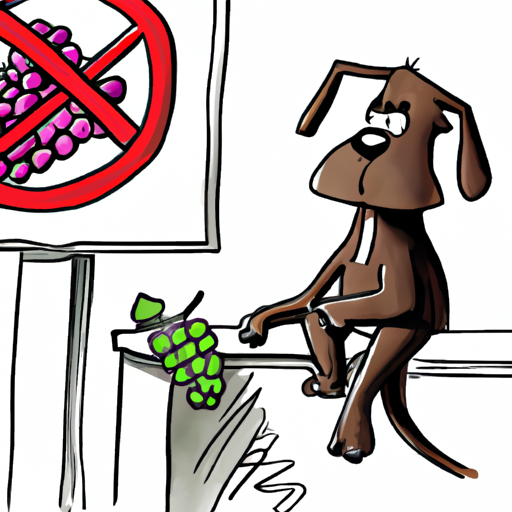Understanding the Dangers of Chocolate and Grapes to Dogs
As a conscientious caregiver, you always want the best for your furry friend. But do you know that certain human foods can be harmful, even lethal, to dogs? Among the most notable culprits are chocolates and grapes.
Chocolates contain a bitter alkaloid called Theobromine, which dogs can’t metabolize effectively. Consequently, it builds up in their system, leading to severe health complications, or even death. The toxicity level depends on the type and quantity of chocolate. Dark chocolate, for instance, has more Theobromine than milk chocolate.
On the other hand, grapes and their dried forms – raisins and sultanas – cause kidney failure in dogs. The exact toxic substance in grapes is still unknown, but even small amounts can be hazardous.
Recognizing the Symptoms of Chocolate and Grape Toxicity
As a guardian, it’s crucial to recognize the telltale signs of chocolate or grape poisoning. The sooner you spot these symptoms, the better the chance of a full recovery for your dog.
For chocolate, symptoms include:
- Restlessness
- Rapid breathing
- Vomiting and diarrhea
- Increased heart rate
- Seizures
For grapes, symptoms are:
- Loss of appetite
- Lethargy or weakness
- Dehydration
- Abdominal pain
- Kidney failure (in severe cases)
What To Do If Your Dog Eats Chocolate or Grapes
Time is of the essence. If you suspect that your dog has ingested chocolate or grapes, take immediate action. Here’s a guide:
- Stay Calm: Panic won’t help the situation. Stay composed to think clearly.
- Call a Vet: Reach out to a vet or a pet poison control center immediately. Provide them with as much information as possible – the type and amount of food consumed, the weight of your dog, and any symptoms observed.
- Follow Instructions: The vet may instruct you to induce vomiting or rush the dog to the clinic.
Preventing Accidental Ingestion
Prevention is always better than cure. Here are some practical steps you can take:
- Keep all chocolate and grapes out of your dog’s reach.
- Educate everyone in the house about these dangers.
- Never leave food unattended on low tables or counters.
- Use secure garbage cans that your dog can’t rummage through.
Frequently Asked Questions (FAQs)
Q: Can dogs eat white chocolate?
A: While white chocolate contains less Theobromine, it’s still harmful due to its high sugar and fat content.
Q: What about seedless grapes?
A: Even seedless grapes are toxic to dogs.
Q: How is chocolate toxicity treated?
A: Treatment may include inducing vomiting, administering activated charcoal, or intravenous fluids.
Q: How much chocolate or grapes can be lethal?
A: There’s no safe amount. Even small quantities can be dangerous.
Q: What other foods are harmful to dogs?
A: Other foods to avoid include onions, garlic, alcohol, caffeine, and certain artificial sweeteners.
Remember, as a caregiver, your vigilance is the best protection for your beloved pet.



